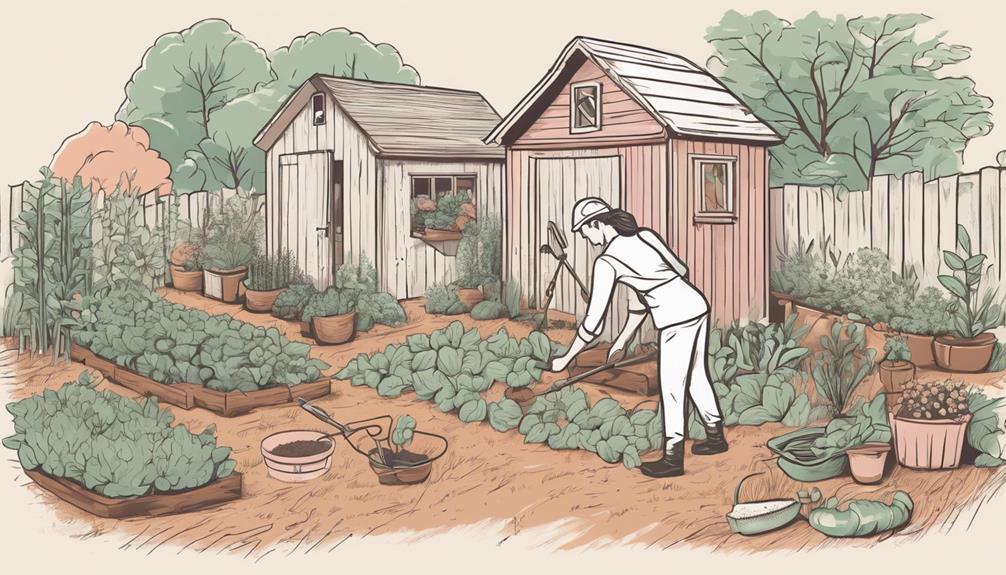See All: Backyard Farming
Free Backyard Farming Webinar…
You can grow food! This free webinar is for people who want the fastest and easiest ways to produce healthy and delicious vegetables, eggs, and meat. Because you know that growing your own food is like printing your own money…
Click Here To Watch The Free Webinar Now!
“I’m setting up my first backyard farm here in Queensland, Australia and I want to make sure I’m starting off on the right foot. How do I assess the soil quality in my backyard to ensure my plants grow healthy and strong?” Thanks, Amanda, Queensland, Australia.
Understanding Soil Quality
Soil quality is the foundation of a healthy and productive backyard farm. Assessing the soil helps predict how well plants will grow and enables timely amendments. Various factors such as soil texture, structure, pH level, and nutrient content all play significant roles in determining soil quality.
Initial Soil Inspection
Before delving deeper into testing, Amanda, performing a visual inspection of the soil is a beneficial first step. This can tell you a lot about your soil’s current state.
- Color: Dark soil usually indicates rich organic matter compared to light-colored soil.
- Texture: Rub some moist soil between your fingers. Sandy soil feels gritty, clay soil is sticky, and silt feels smooth. Ideal soil, termed loam, should have a balanced feel.
- Structure: Look if the soil forms crumbs or clumps easily, which means it’s good for root penetration and air circulation.
- Drainage: Check after rain or watering. If water stands for long, the soil may have drainage issues that need addressing.
Soil Texture Analysis
The Jar Test
The jar test is a reliable DIY method to understand soil texture, combining basic materials and a bit of patience.
- Collect a soil sample from different parts of the yard.
- Remove debris like rocks and organic material.
- Fill a jar two-thirds full with water and add the soil until nearly full.
- Shake the jar vigorously for a few minutes and let it sit undisturbed for 24 hours.
- Observe the layers forming: sand settles first, followed by silt, then clay.
- Measure each layer to determine proportions. Use these measurements to identify the soil type.
Soil pH Testing
Soil pH affects nutrient availability for plants, making this an important factor for Amanda to check.
Using pH Testing Kits
pH testing kits are readily available in gardening stores and offer a cost-effective way to measure soil pH. Follow the instructions closely for accurate results. Typically, you’ll mix soil with a solution and compare the color change to a pH scale.
Professional Soil Testing
If more precise results are required, sending samples to professional labs is a great option. These labs provide detailed insights, including recommendations for amendments.
Nutrient Content Analysis
Nutrients like nitrogen, phosphorus, and potassium are crucial for plant growth. Testing kits for these nutrients are similar to pH kits, offering quick and straightforward results. Here’s what they indicate:
- Nitrogen (N): Vital for leafy growth.
- Phosphorus (P): Essential for root and flower development.
- Potassium (K): Important for overall plant health and disease resistance.
Soil Biology
Healthy soil teems with life, including earthworms, microbes, and fungi, which contribute to nutrient cycling and soil structure.
- Earthworm Count: Dig a square-foot hole and count the earthworms. Healthy soil should have around 10 worms.
- Organic Smell: Healthy soil smells earthy due to microbial activity. A foul odor may indicate anaerobic conditions.
Improving Soil Quality
After initial assessment, amending the soil to correct deficiencies and enhance quality is the next step.
Adding Organic Matter
Compost, manure, and mulch enrich soil with essential nutrients and improve texture and water retention. Apply a generous layer to see noticeable improvement over time.
Adjusting pH
If the soil is too acidic, adding lime can raise pH. If it’s too alkaline, sulfur or organic matter can help lower it. These adjustments ensure nutrients remain accessible to plants.
Regular Testing and Monitoring
Continuously monitor soil quality to ensure optimal growing conditions. Conduct soil tests periodically to keep track of pH and nutrient levels, and adjust as necessary.
Final Thoughts…
Amanda, thanks for reaching out with your question. Knowing how to assess and amend your soil effectively sets a solid foundation for a thriving backyard farm. Happy farming in Queensland!
Return To: Backyard Farming
Free Backyard Farming Webinar…
Marjory Wildcraft: For 20+ years, Marjory has been a leader in survival & preparedness and wants to show you how to grow food in your backyard farm. This free webinar is for people who want the fastest and easiest ways to produce healthy and delicious vegetables, eggs, and meat. Because you know that growing your own food is like printing your own money…

